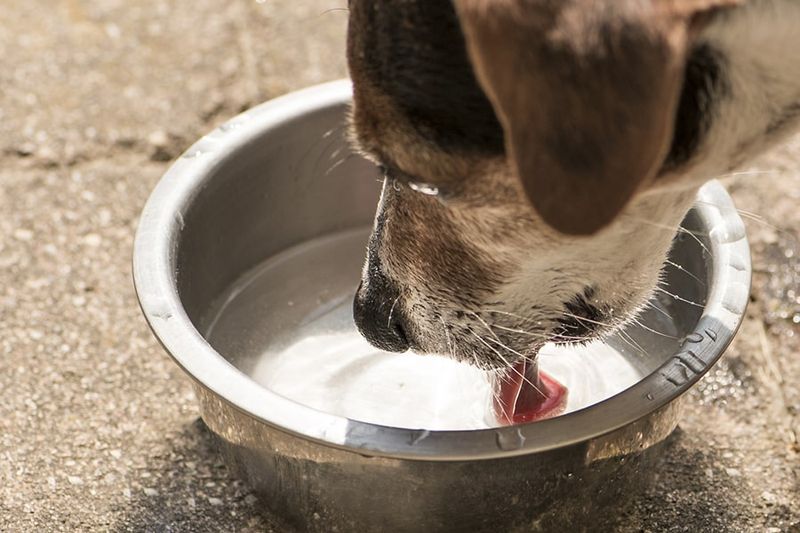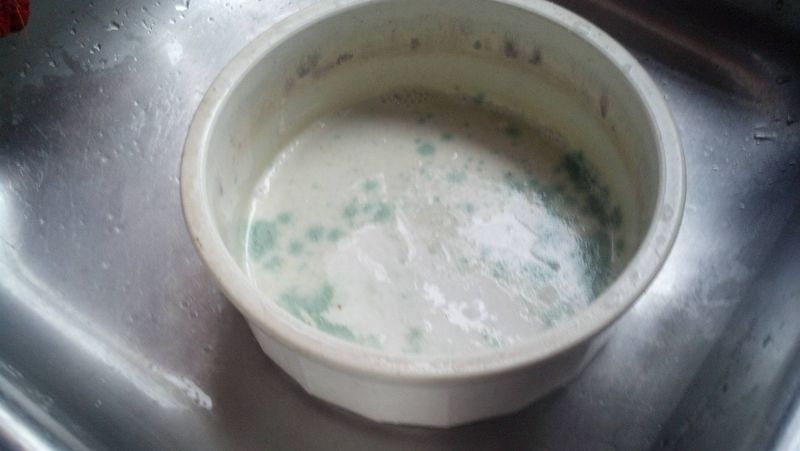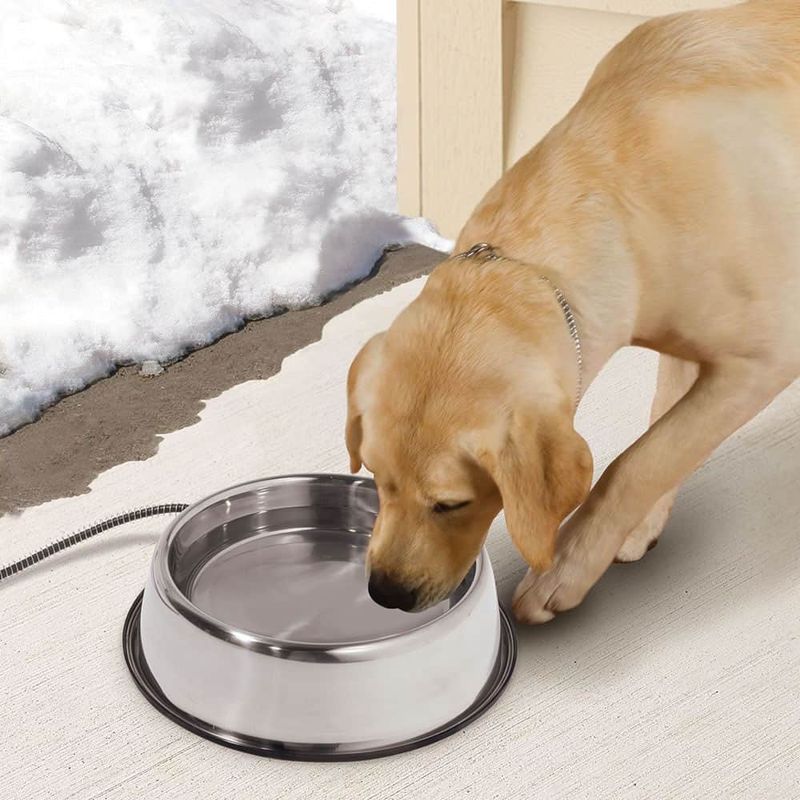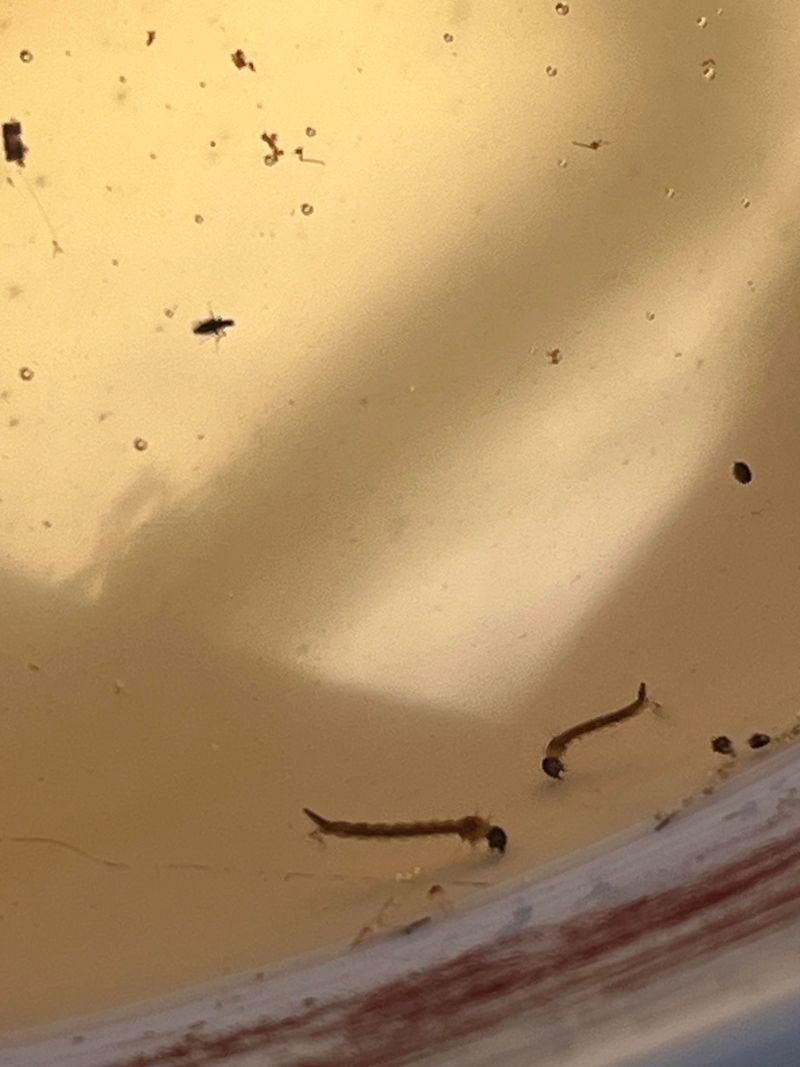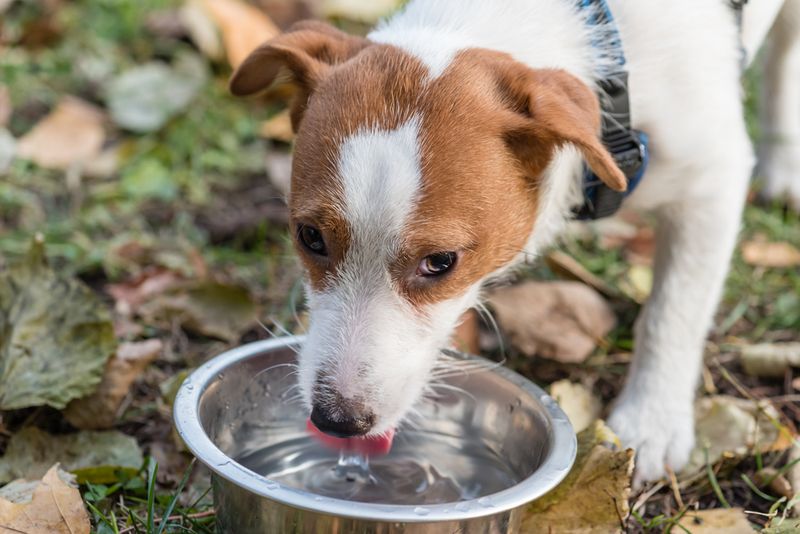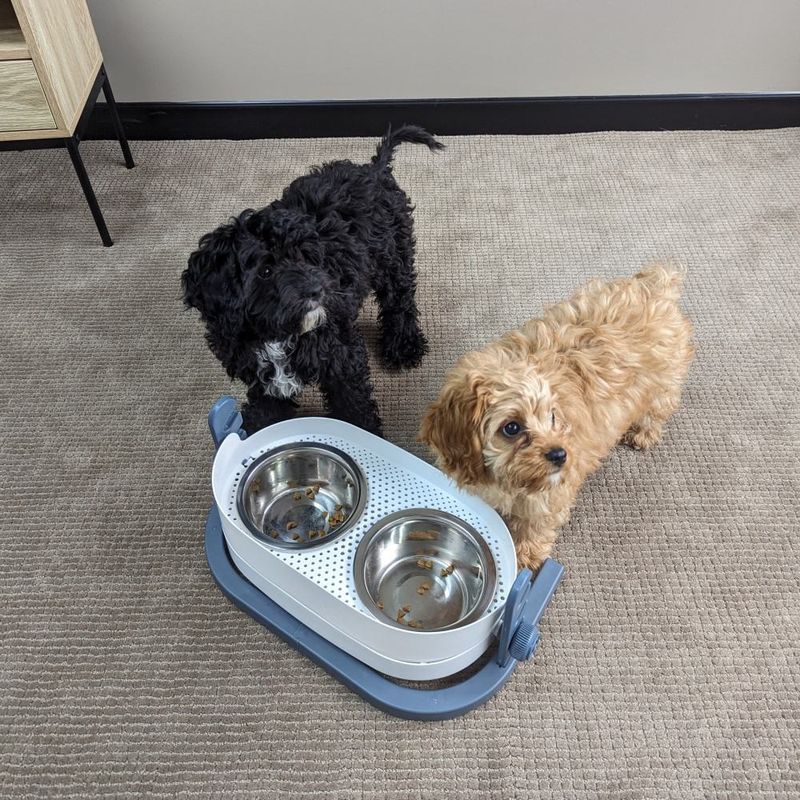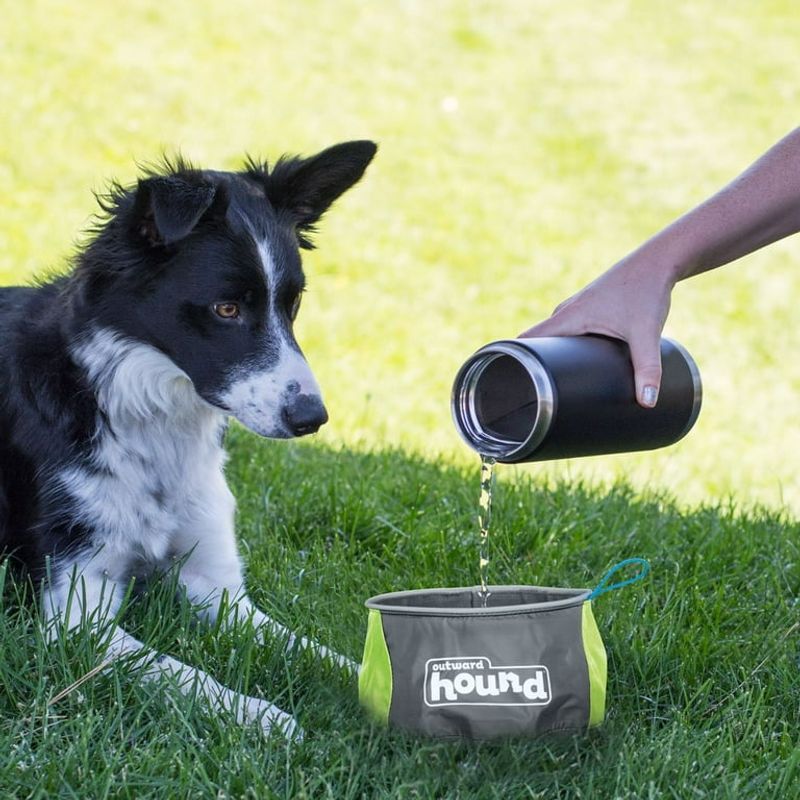Leaving water bowls outside for dogs may seem convenient, but it’s not always the best choice for your furry friends. This blog post explores seven reasons why dog owners should reconsider this practice and offers better alternatives for keeping your dog’s water clean and safe.
Contamination from Wildlife
Imagine a quiet night when the local wildlife decides to pay a visit to your backyard. Small creatures like raccoons and birds can easily find their way to your dog’s outdoor water bowl, potentially contaminating it with bacteria and parasites.
They might see it as a convenient water source, unaware of the health risks they bring along. These microorganisms can cause various infections, posing a severe threat to your dog’s health.
To prevent this, it’s wiser to keep the water bowl indoors or opt for a self-cleaning water fountain designed to deter wildlife.
Algae Growth in Sunlight
Picture a sunny afternoon with your dog’s water bowl sitting in direct sunlight. The warm and bright conditions are perfect for algae growth, turning clear water into an unappealing greenish hue.
Algae not only affects the taste but can also introduce toxins and bacteria, making the water unsafe for your pet. It’s crucial to monitor the environment where the water bowl is placed.
Consider using a shaded area or moving the bowl inside to prevent algae proliferation. Regular cleaning is also essential to ensure your dog’s water remains fresh and safe.
Temperature Fluctuations
When seasons change, so does the temperature of your dog’s outdoor water bowl. In colder climates, water can freeze, making it inaccessible and potentially harmful if ingested as ice.
Conversely, during hot summer days, the water can become too warm, discouraging your dog from drinking enough and risking dehydration. The fluctuating temperatures create an inconsistency in water availability.
To maintain a consistent temperature, place the bowl indoors or use an insulated bowl that regulates water temperature, ensuring your dog stays hydrated year-round.
Insect Infestation
On a warm summer evening, insects like mosquitoes find the still water of an outdoor bowl irresistible. This can lead to infestations, making the water unpleasant and potentially dangerous.
Mosquitoes, in particular, can lay eggs in the water, leading to larvae and further breeding. This not only diminishes water quality but also increases the risk of diseases such as heartworm.
By keeping the water bowl inside, you minimize the attraction for insects, or consider a covered bowl design to keep bugs at bay while ensuring clean water for your dog.
Dirt and Debris
A gust of wind can quickly turn your dog’s outdoor water bowl into a collection point for dirt, leaves, and other debris. These foreign objects can sully the water, making it unappetizing and potentially harmful.
The presence of debris may introduce bacteria and other pathogens, contributing to health issues over time. Your dog deserves clean, refreshing water without the added crunch.
Regularly emptying and cleaning the bowl is essential, and positioning it away from trees and shrubs can reduce debris accumulation.
Risk of Tipping Over
In the playful world of dogs, accidents happen. A rambunctious puppy can easily tip over an outdoor water bowl, leaving your pet without water until you notice.
This can lead to dehydration, especially during warm weather. The spilled water can also create muddy areas, which might be less than ideal for your garden or patio.
Opt for a heavier, more stable bowl or install an automated water dispenser that refills itself as necessary, preventing spills and ensuring hydration.
Limited Supervision
Without regular supervision, an outdoor water bowl may run dry without you realizing. Dogs might hesitate to alert you when their water source is depleted, especially if they’re busy playing outside.
This can lead to prolonged periods without hydration, particularly in active dogs who need constant water intake. Regularly checking and refilling the bowl is vital.
Consider placing the water bowl in a high-traffic indoor area where it can be checked frequently, or investing in a water level indicator to keep track easily.

